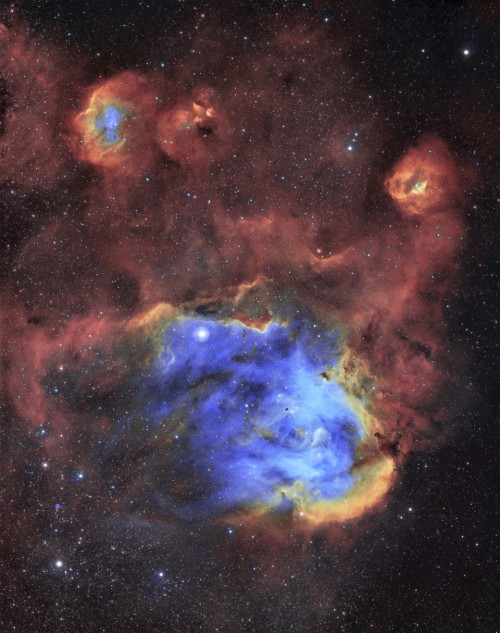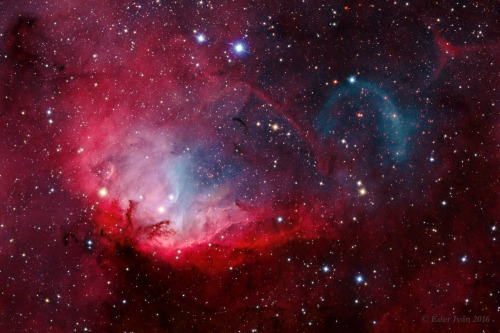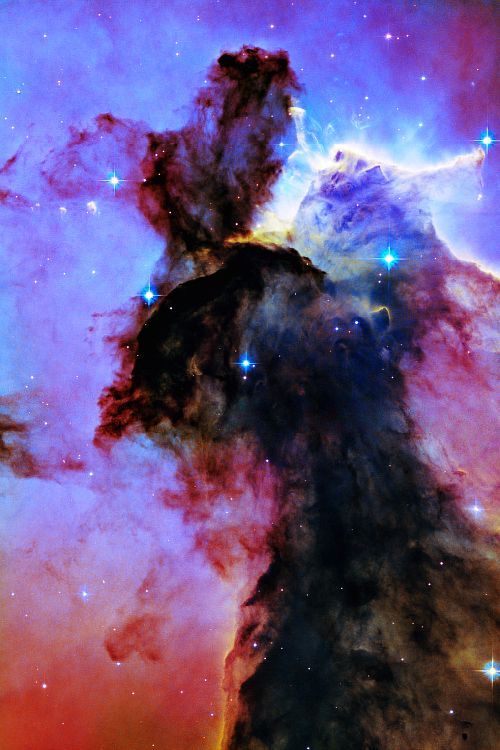#constellation

Chioma di Berenice (Berenice’s Tresses, 1878) is by Ambrogio Borghi (1849-1887). The figure is 190 cm (74¾ in.) high; its column and wood base is 90cm (35½ in.) high.

Chioma di Berenice (Berenice’s Tresses, 1878) is by Ambrogio Borghi (1849-1887). The figure is 190 cm (74¾ in.) high; its column and wood base is 90cm (35½ in.) high.

Chioma di Berenice (Berenice’s Tresses, 1878) is by Ambrogio Borghi (1849-1887). The figure is 190 cm (74¾ in.) high; its column and wood base is 90cm (35½ in.) high.
Constellation was not decided from the beginning to be a well-known constellation today. What was used in each country and region was integrated into one to form what is today’s constellation.
The origin of today’s constellations is Western European constellations, which originated in the Semitic nomadic Chardians who lived in the Babylonian region around thousands BC. They started to build constellations after looking up at the night sky and connecting bright stars to animals while keeping livestock and moving along the blue vegetation. Twelve constellations, including sheep, bulls, twins, crabs, lions, virgins, scales, scorpions, goats, water turtles, and Pisces, along the ecliptic, which is the path through which the sun and planets pass, are recorded in the area’s landmark around B.C. 3000.
People assign constellations to the month and day of birth.
The following table shows it.

Chinese zodiac 12띠
Historical relics and records show the origin of twelve-year-old animals, which are different from folk tales. The Chinese zodiac signs were represented by imitating the shape of stars to observe natural cycles such as constellations and seasonal changes. The twelve signs of the Chinese zodiac are based on the state in which everything changes from spring to winter depending on the season. The twelve signs of the Chinese zodiac were widely used in the Yin Dynasty in China, and in the middle of the Han Dynasty, the twelve signs of the zodiac were connected in terms of time and defense.
We can write these as ‘the year of (the) ~’.
ex) 2015 was the year of sheep.

60Gapja 60갑자
Sixty-thousand characters refer to 60 ganji made by combining Cheongan and Jiwon. There are 60 from Gapja to Gyehae. This is why in Korea, we celebrate when one become 61 years old and 60 years old in Korean age.
The 60s are deeply related to ancient Babylonian Sumerian mathematics, which is recognized as the first civilization of mankind. Sixty characters are the number of 60 cases in which ten chapters and twelve chapters meet. Scholars estimate that the decimal system has the origin of ten fingers of a person, and the decimal system is a cycle of twelve months a year.

[참조 및 출처]
- 구글 이미지
- 네이버 블로그
- 네이버 지식백과
- 위키백과
-Written by Admin Sung

Similar in size to large, bright spiral galaxies in our neighborhood, IC 342 is a mere 10 million light-years distant in the northern constellation of Camelopardalis. It would be a prominent galaxy in our night sky, but it is hidden from clear view and only glimpsed through the veil of stars, gas and dust clouds along the plane of the Milky Way galaxy. Even though IC 342’s light is dimmed and reddened by intervening cosmic clouds, this sharp telescopic image shows the galaxy’s dust, young star clusters, and glowing pink star forming regions along spiral arms that wind far from the galaxy’s core. IC 342 may have undergone a recent burst of star formation activity and is close enough to have gravitationally influenced the evolution of the local group of galaxies and the Milky Way.
Image Credit & Copyright: Daniel Feller

It’s easy to get lost following the intricate, looping, twisting filaments in this detailed image of supernova remnant Simeis 147 or, as it’s better known as, the Spaghetti Nebula. Seen about 3,000 light years away, toward the boundary of the constellations Taurus and Auriga, it covers nearly 3 degrees or 6 full moons on the sky- about 150 light-years wide. This composite image includes data taken through narrow-band filters where the reddish emission is from ionized hydrogen atoms and doubly ionized oxygen atoms is in faint blue-green hues. The supernova remnant has an estimated age of about 40,000 years, meaning light from the massive stellar explosion first reached Earth 40,000 years ago. But the expanding remnant is not the only aftermath. The cosmic catastrophe also left behind a spinning neutron star, or pulsar. It’s all that remains of the original star’s core.
Happy new year everyone!
Image Credit & Copyright: Jason Dain

An enhanced Scorpius constellation!! If it looked this good to the unaided eye, we might might remember it better, typically appears as a few bright stars in a constellation. To get a spectacular image like this, though, you’d need a good camera, a dark sky, and some sophisticated image processing. The resulting digitally-enhanced image shows many breathtaking features. Diagonal across the right side of the image is part of the Milky Way Galaxy. Visible there are vast clouds of bright stars and long filaments of dust. Rising vertically on the left are dark dust bands known as the Dark River. Several of the bright stars on the left are part of Scorpius’ head and claws, and include the bright star Antares. Numerous red emission nebulas, blue reflection nebulas, and dark filaments are visible as well. Scorpius appears prominently in southern skies after sunset during the middle of the year.
Image Credit & Copyright: Stefan Lenz

Spiral galaxy, NGC 3521 is about 35 million light-years away, toward the constellation Leo. Relatively bright in planet Earth’s sky, it is easily visible in small telescopes but often overlooked by amateur imagers in favor of other, more popular, spiral galaxies, like M66 and M65. It’s hard to overlook in this colorful cosmic portrait, though. Spanning some 50,000 light-years the galaxy has characteristic patchy, irregular spiral arms laced with dust, pink star forming regions, and clusters of young, blue stars. This image also shows the galaxy embedded in gigantic bubble-like shells. They are likely tidal debris, which are streams of stars torn from satellite galaxies that have undergone mergers with NGC 3521 in the distant past.
Happy Easter to everyone who celebrates!
Image Credit & Copyright: Acquisition - Eric Benson, Processing - Dietmar Hager












